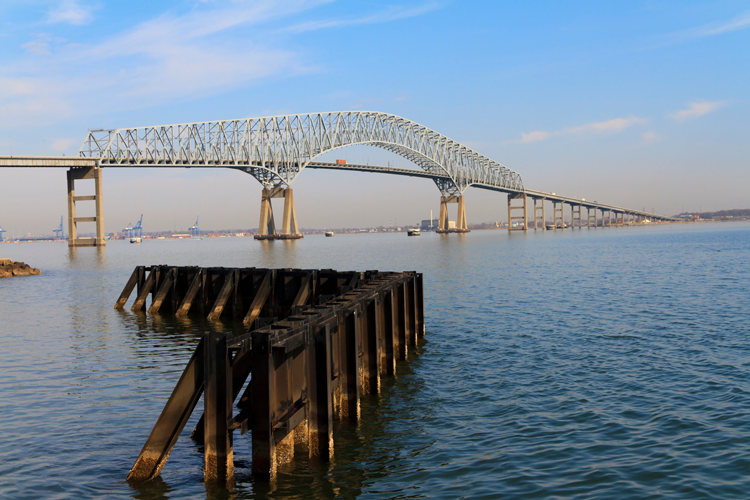
The collapse of the 1.5-mile Francis Scott Key Bridge has caused the immediate and indefinite suspension of shipping traffic at the Port of Baltimore, which handles the most imports and exports of farm and construction machinery of any port in the country. Last year, a record 1.3 million tons of agricultural and construction equipment went through the port.
Nearly every ag equipment manufacturer in the U.S. utilizes the port, the closest East Coast option to the Midwest. In addition to heavy machinery, it handles the most cars and light trucks among U.S. ports for manufacturers including General Motors, Toyota, and Nissan. Those companies must now consider alternative routes for their deliveries.
Just before 1:30 a.m. on Tuesday, a 985-foot-long container ship loaded down with about 4,700 shipping containers was travelling roughly 9 miles per hour when it struck a pillar of the bridge less than an hour after setting out for a journey to Sri Lanka. The massive ship had lost power and steering control, though it is unclear what caused the power outage.
Fortunately, a timely distress signal from the ship allowed officials to stop cars from entering the bridge shortly before the impact. The early morning hour also saved lives. The busy thoroughfare takes I-695 over the Patapsco River that runs into the Chesapeake Bay and handles about 33,000 cars each day, many of them commuters around the Baltimore and Washington, D.C., metro area or trucks of hazardous materials like gasoline that cannot travel through the city’s tunnels around the water.
The impact from the ship caused a horrifying crumble of nearly the entire structure, one section of the steel-truss bridge at a time, sending tons of metal and concrete tumbling into the cold water below. Eight construction workers who were patching potholes on the bridge are believed to be the only people who went down with the bridge. Two were rescued, but the other six are now presumed to have died, and recovery efforts are underway. No crew members from the ship were missing or seriously injured.
The collapse created a barrier of debris between the port and the open water of the Bay and thus the Atlantic Ocean. The port is not a major hub for agricultural trade, but it did import 3 million tons of agricultural products last year. Among the major commodities passing through Baltimore are sugar, soybeans, and grains including corn and wheat.
It is unclear how long shipping traffic to and from the port will remain stopped. Officials expect clean up efforts to take weeks while bridge materials are removed from the water and the ship, which remains stopped under the bridge’s path with metal gnarled around its nose. President Joe Biden has vowed that the bridge will be rebuilt. Until then, supply chains across the economy face a number of decisions about rerouting materials.
The bridge opened in 1977 after five years of construction and is named for the author of “The Star-Spangled Banner.” The failed British bombing of nearby Fort McHenry in the War of 1812 inspired what is now our national anthem.








